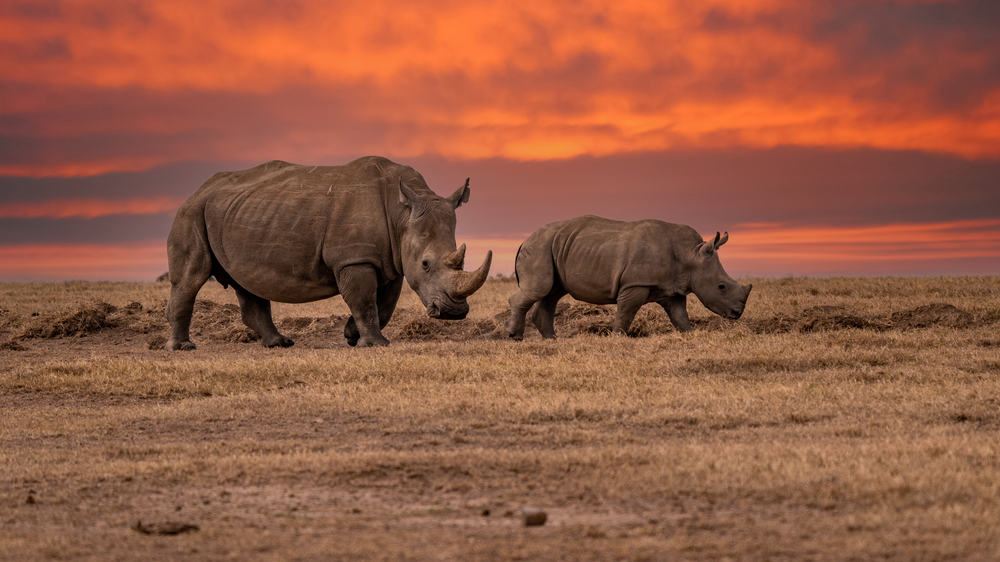Do you know what’s the largest land animal? If you guessed elephant, you were correct. Right after the elephants, there is an animal equally fascinating, and almost as big. That animal is the rhinoceros.
With their massive build and horned noses, rhinos are one of the most interesting animals in the world. Sadly, they are endangered due to uncontrolled illegal poaching and environmental changes.
The Species Of Rhinos
Several rhino species have gone extinct in the past. The world currently has five rhino species that are still alive.
White Rhinoceros
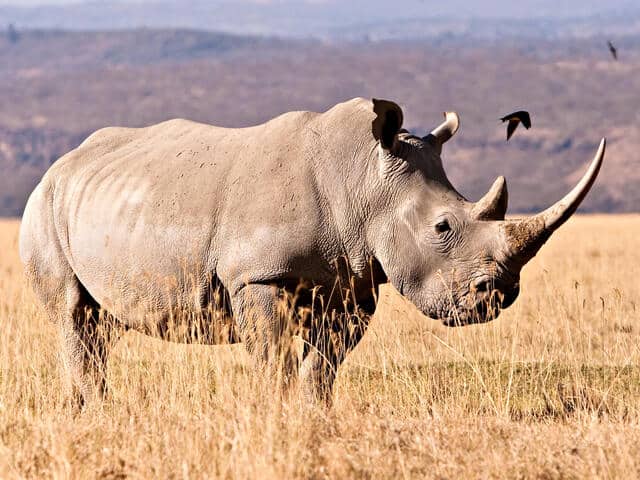
The white rhinoceros, also known as the square-lipped rhino, is the largest rhino species. It got its name from its wide mouth, which is ideal for grazing. Sudan and Kenya are home to white rhinos.
Northern white rhinos and southern white rhinos are the two subspecies of white rhinos. While there are approximately 20,000 southern white rhinos left in the wild, there are only two female northern white rhinos.
Black Rhinoceros
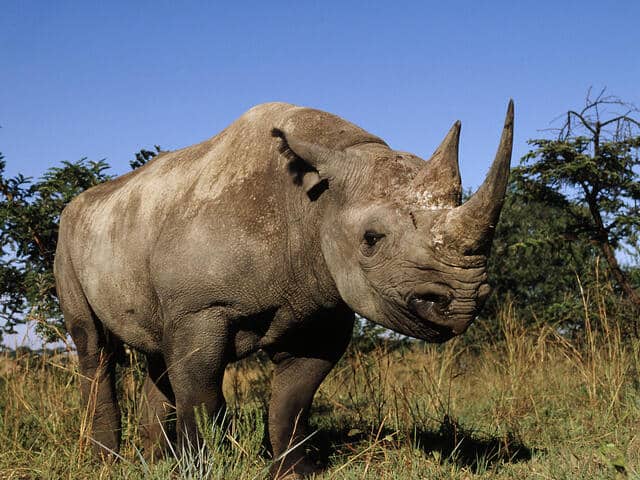
The black rhinoceros, also known as the hook-lipped rhino due to its pointed upper lip, is found in several South African countries, including Namibia, Kenya, and Botswana. Diceros bicornis was given this name because it has two horns.
Three subspecies of the black rhino have become extinct. The subspecies that remain are critically endangered. Illegal poaching, habitat loss, and raging civil wars drove black rhinos, once the most numerous rhino species, nearly extinct.
Indian Rhinoceros
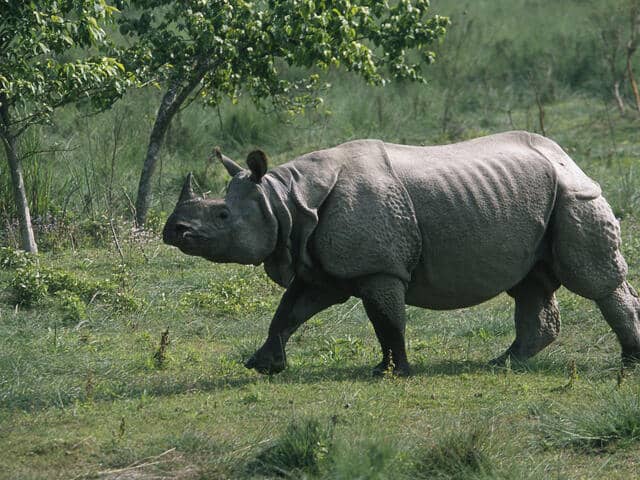
This rhinoceros is also known as the greater one-horned rhinoceros. It can be found in India and the Indian subcontinent. The Indian rhino once roamed large areas of the Indian subcontinent, but its range has been greatly reduced due to overhunting and agricultural development.
Indian rhinos are nearly as large as white rhinos, and they are Asia’s second-largest land mammal, after the Asian elephant. Their skin is thick brown-gray with pink skin folds.
Javan Rhinoceros
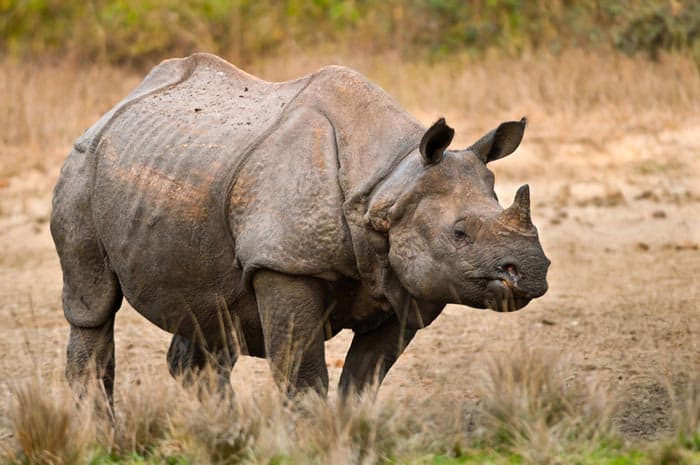
The Javan rhino, also known as Sunda rhinoceros or lesser one-horned rhinoceros, belongs to the same genus as the Indian rhino and has a similar appearance, except that the Javan rhino is much smaller than the Indian rhino.
Nonetheless, the Javan rhino is the largest animal on the island. Unfortunately, less than 100 Javan rhinos remain in the wild, making them one of the world’s most endangered species.
Sumatran Rhinoceros
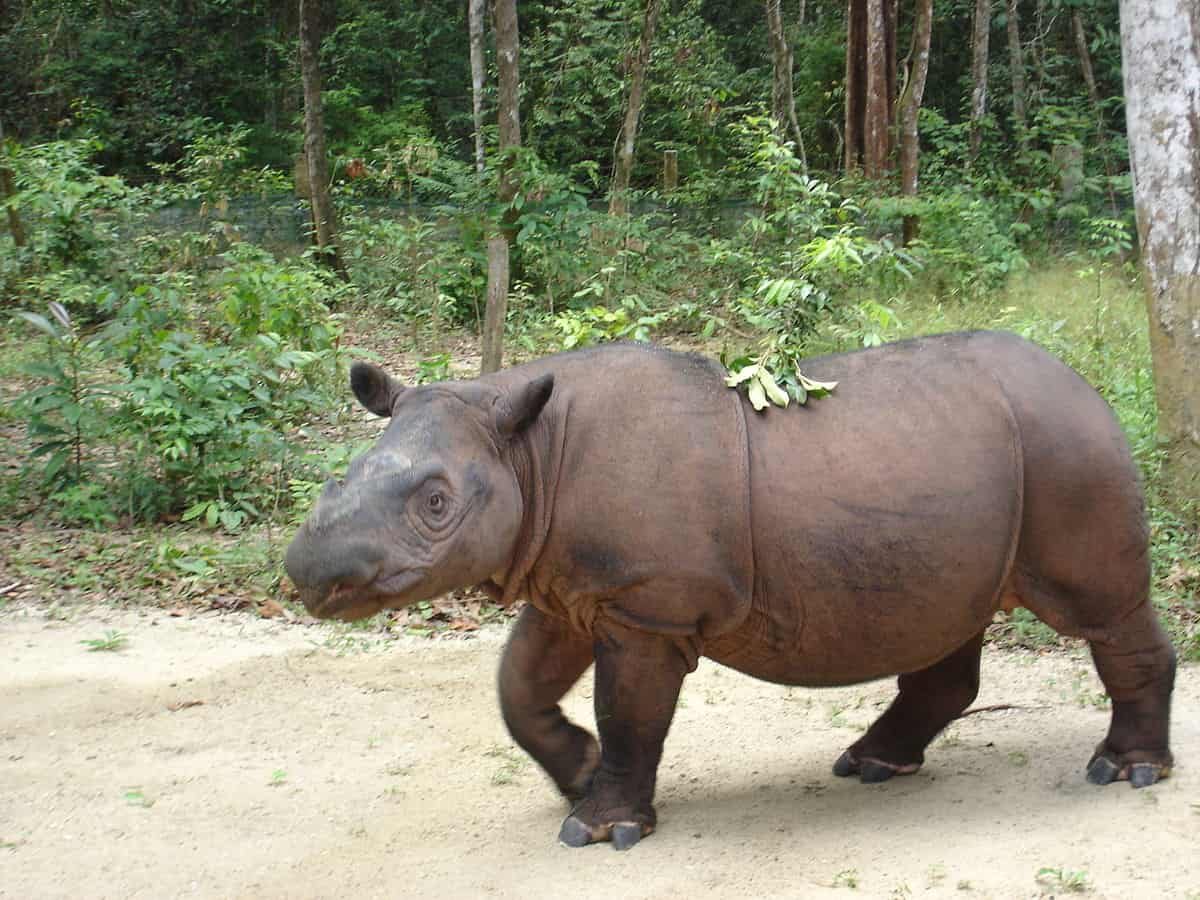
Sumatran rhinoceros, also known as hairy rhinoceros or Asian two-horned rhinoceros, has two horns and a reddish-brown hair-covered body. It is the most vocal rhino species, communicating through excrement, twisting saplings into patterns, and marking the soil with its feet.
Sumatran rhinos were once found in many Asian countries, but now they can only be found in Sumatra and Borneo. It is estimated that there are fewer than 80 wild Sumatran rhinos left.
Rhinos’ natural habitats include desserts, shrublands, tropical moist forests, savannas, and tropical and subtropical grasslands. In the wild, rhinos can be found exclusively in Africa and Asia.
Habitat of the Rhinoceros
Because of the hunting, poaching, climate, and habitat change, rhinos take up fewer territories each year. From approximately 500.000 at the beginning of the 20th century, today there are around 29.000 wild rhinos left.
White and black rhinos live in Africa, in countries like Angol, Zimbabwe, South Africa, Kenya, Botswana, Sudan, etc. Indian, Javan, and Sumatran rhinos live in Asia, particularly in India, Nepal, Java, Sumatra, and Borneo.
What Do Rhinos Eat?
Although they look intimidating, rhinos are actually herbivores. They feed on large amounts of grass, plant shoots, trees, branches, bark, and bushes. Depending on the species, some rhinos need dozens of pounds of food each day.
The Eating Habits Of Rhino In The Wild
Indian and white rhinos prefer to eat short grass, while black, Javan, and Sumatran prefer to eat tree branches, leaves, and fruits. Rhinos have taste preferences, and they also have sweet tooth, destroying whole farmlands in search of sweet fruits.
Rhinos prefer variety when it comes to their diet. One research showed that, out of 34 plant species in their surroundings, rhinos ate 32 pieces. This diversity is important for their health.
Bigger species like white rhinos and Indian rhinos need more food than the other species. One white or Indian rhino can eat over one hundred pounds of grass in a day. Black and other rhinos can eat only a half of that amount.
Rhinos spend one-third of their days eating or searching for food. They drink water every day when they have the opportunity, but they can survive several days without it. When the food sources are scarce, rhinos usually resort to eating plant roots and tree bark to survive.
- Young Rhinos
Baby rhinos eat their mother’s milk until they are 1-1.5 years old. Rhino calf can’t survive on its own until it is approximately three years old. It will stay with its mother, which will teach him how to forage for food.
They also feed on their mother’s excrement when they are 3-7 months old. Although it sounds disgusting, they do it because baby rhinos lack beneficial microorganisms in their digestive tracts. By eating their mother’s poop, they also eat those microorganisms and get ready for eating solid food.
- Various Feeding Habits Among Rhino Species
The black rhino’s diet is quite versatile. Black rhinos are spotted eating more than 200 different plant species, including trees, shrubs, and succulents. They only eat grass when absolutely necessary.
While white rhino feeds on short grass almost exclusively, the Indian rhino spends 60% of its day in the water, nibbling on the aquatic plants.
Javan and Sumatran usually eat twigs, branches, leaves, berries, and fruits, but they also like to graze on grass.
The Eating Habits Of Rhino In The Captivity
Most rhinos kept in zoos are fed with soy and alfalfa. Although these plants keep them fed, they are not versatile enough to satisfy the rhino’s daily nutritional needs.
Also, soy directly affects phytoestrogens, a type of estrogen hormone that affects the female rhino’s reproductive cycles. This contributes to lower fertility levels among female rhinos, which is a big problem considering the preservation efforts.
A more balanced diet for rhinos in captivity includes grass hay, lucerne hay, horse pellets, chopped carrots, and apples. Although still different than what they would eat in the wild, these food items still provide more nutrients than soy or alfalfa.
In captivity, rhinos have less physical exercise, and hence need fewer calories during the day. This is why captive rhinos usually eat less than their wild counterparts.
How Do Rhinos Forage Food?
Rhinos belong either to grazers or browsers when it comes to how they eat their food. White and Indian rhinos are grazers, which means they lower their heads to feed on short grasses.
Black, Javan, and Sumatran rhinos are all browsers, which means they look for food that’s above their eye level, usually at high tree branches. They feed on branches, fruits, and leaves.
When necessary, white and Indian rhinos might feed like browsers, and black, Javan, and Sumatran rhinos will feed like grazers.
What Animal Eats Rhinos?
Due to the rhinos’ size, not many animals dare to hunt them. However, lions in Africa and tigers in Asia sometimes hunt young rhinos because they are more vulnerable and easier prey to kill. Also, leopards, hyenas wild dogs, and Nile crocodiles hunt young rhinos, but less often than tigers and lions.
Illegal Rhino Poaching And Its Consequences
Still, the biggest rhino predators aren’t these animals. It is us, humans, that killed so many rhinos that we drove them to near extinction, with many rhino species already extinct.
Rhinos are hunted for their horns, which are in high demand in Asia. Apart from being a status symbol and decoration, rhino horns were used in alternative medicine for centuries. Apparently, rhino horns cure cancer, hangover, and impotence.
There is no evidence that rhino horns actually have any medical effect. After all, their horns aren’t true horns, as they are made of keratin, a substance that our hair and nails are made of. As a result, ingesting rhino horns has as much effect as biting your nails or chewing on your hair – which is none.
Illegal rhino horn poachers kill rhinos to get their horns, some preservation efforts include cutting rhinos’ horns off without killing them, in order to make them unappealing to poachers. Another strategy involves painting rhino horns in bright and permanent colors, which makes these horns unsellable.
Tips On Caring For Rhinos
Housing
When in captivity, rhinos need special care to stay healthy, both physically and mentally. They need separate indoor and outdoor enclosures. Indoor enclosures should be able to keep rhinos warm during the winter, especially in countries that are colder than rhinos’ natural habitats.
Both indoor and outdoor enclosures need to be as big as possible, for rhinoceros to roam freely. The indoor enclosure should be cleaned every day, and the outside enclosure should be cleaned only when needed.
Both outdoor and indoor enclosures need to provide adequate conditions, such as temperature, humidity, ventilation, and lighting.
Feeding The Rhinos
Rinos should be fed a versatile and balanced diet that will provide them with the needed energy and nutrients. Although different rhino species have different eating habits and nutritional needs, they should be fed with leafy green plants whenever possible.
Grains, fruits, vegetables, soy, and alfalfa should only be given to rhinos when there are no other options, or during training. Also, the rhino’s diet should be enriched with vitamin and mineral supplements.
Conclusion
Although they are enormous and kinda intimidating animals, rhinos are extremely vulnerable to the human impact. After so many rhino species went extinct, today only five rhino species remain: white, black, Indian, Javan, and Sumatran rhino.
The remaining five species are critically endangered too, and they might also go extinct if the preservation efforts fail to protect them from illegal poaching and habitat changes. Making sure that rhinos have plenty of adequate food sources both in the wild and in captivity is also crucial for their survival.
What do your think about rhino poaching? Is there a way to stop it and save the rhinos? Please share your opinion!
